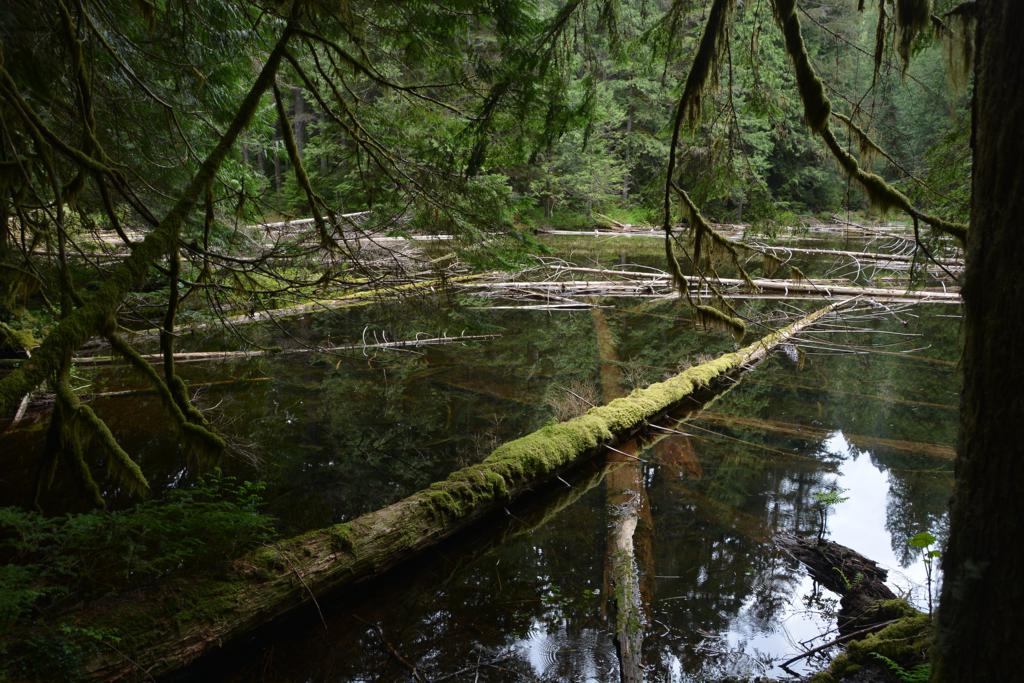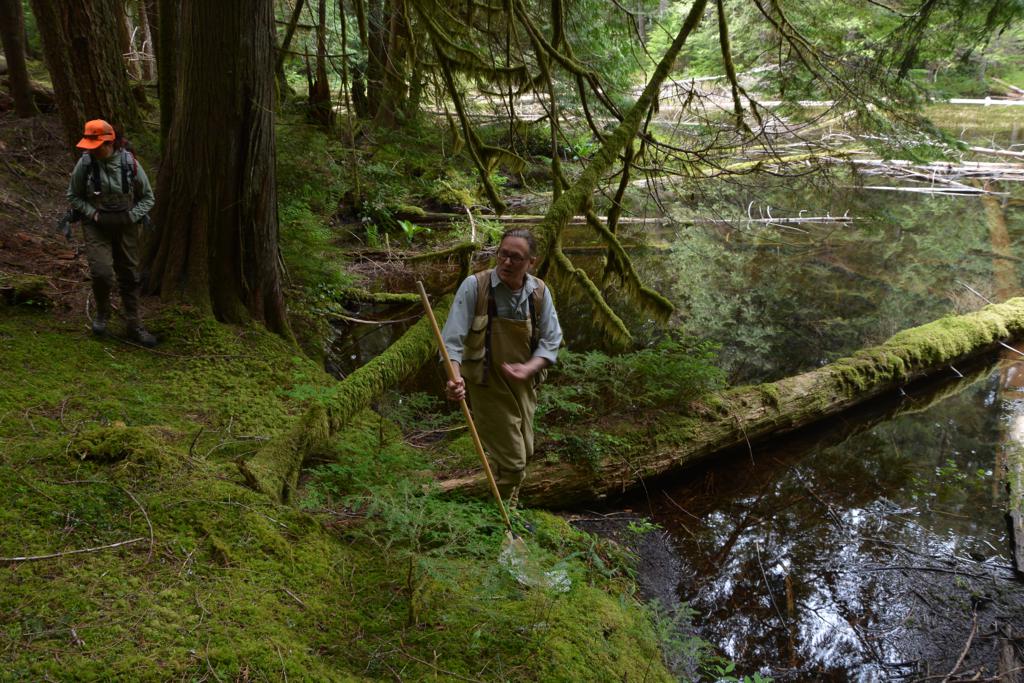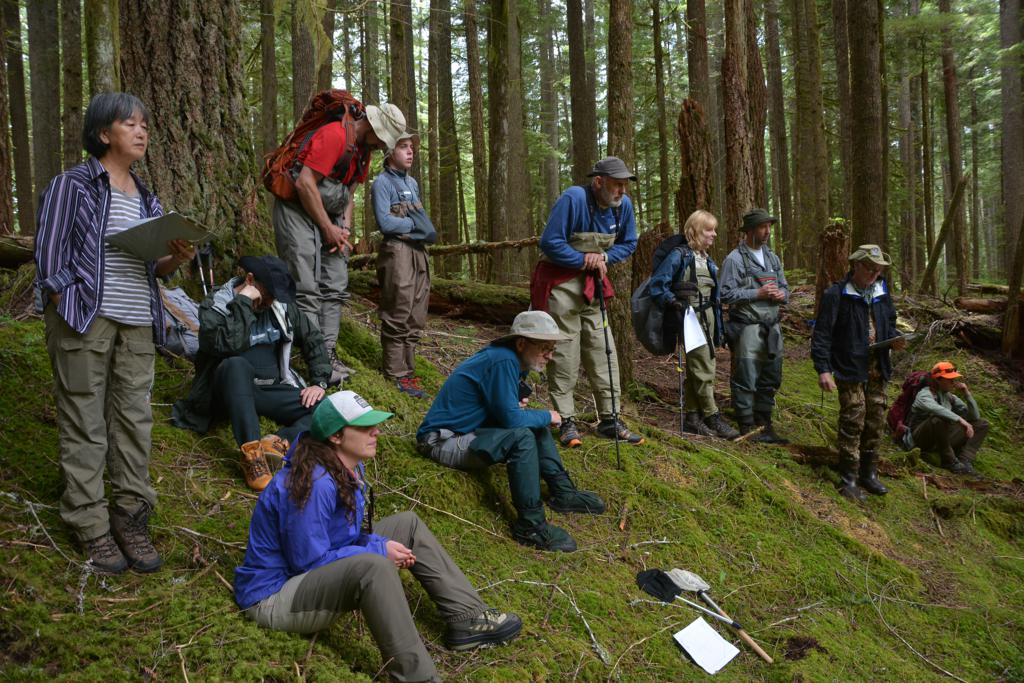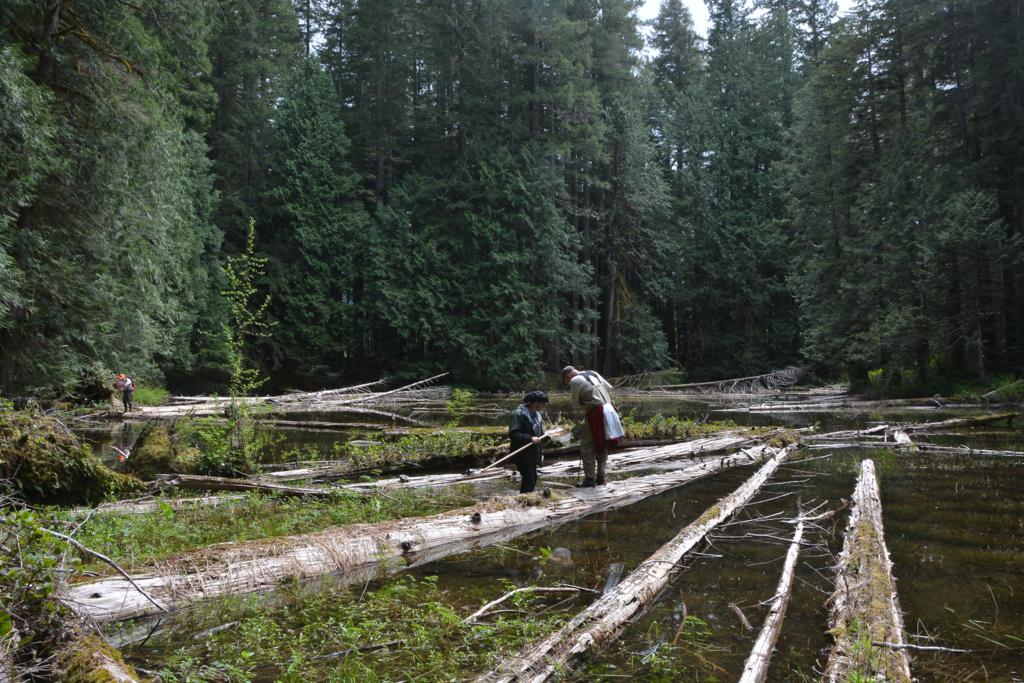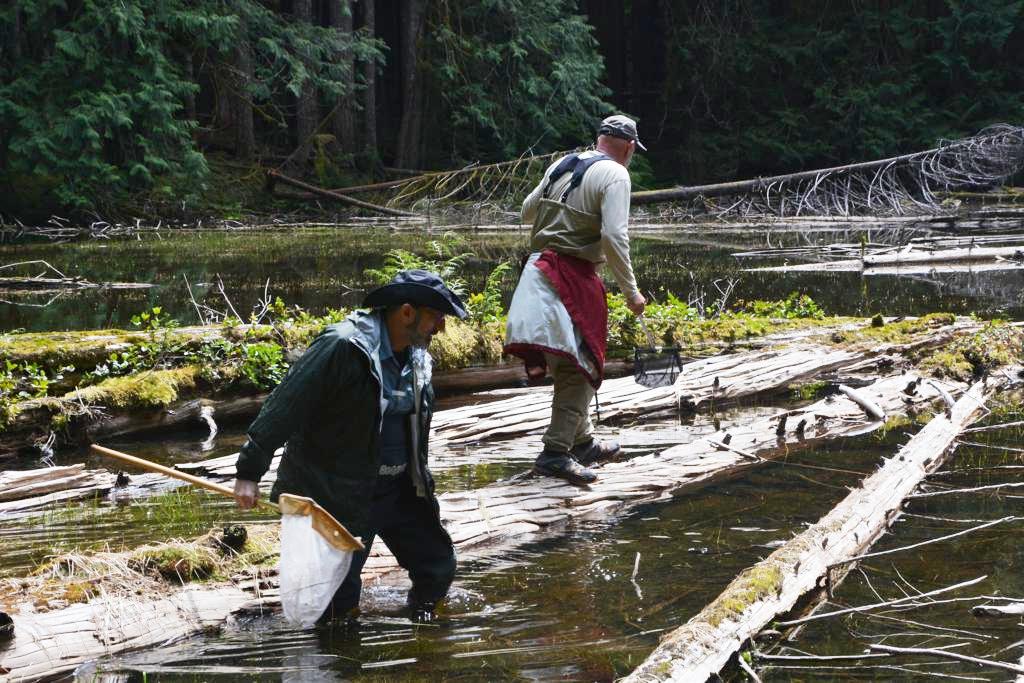Forum Replies Created
-
AuthorPosts
-
Kermit,
Yanling and I are planning to attend the Summer Overnighter on Saturday and we are also hoping to hike to Thorp Lake. We will probable just go directly to the trailhead to Thorp Lake, then afterwards go to Mike’s cabin.Thanks for all the work and planning for this event,
Rex and YanlingBecause the experiment at Little Gee Lake is a formal WDFW project, everyone who participates must be a registered WDFW Volunteer. This is really easy to do since you can register online and that is all that is required. Here is the link to register with WDFW:
https://www.cervistech.com/acts/console.php?console_id=0052&console_type=application
You will need to fill in the standard info like name, address, email, etc. Then here is what you want to enter for the other items:
Have you completed the orientation for new volunteers: “YES”
List types of DFW Training and Dates: “I have been trained by the Hi-Lakers to survey mountain lakes since (Enter the year you became a Hi-Laker)”
Volunteer Interests: Check the box for “Dept of Fish & Wildlife Volunteer Program”
Equipment: Leave this blank
Volunteer Groups: Check the box for “Hi-Lakers”
That all! Submit this and you will receive a login to their volunteer web page.
Many thanks,
RexJanuary 8, 2023 at 4:34 pm in reply to: Sex-altering hormone to curb unwanted populations of brook t #126407Keith and all other interested parties,
I am currently working with WDFW Fish Biologist Justin Spinelli on a proposal to WDFW to do a test lake using YY Chromosome modified fish. If all goes well, we will be starting this project this year. WDFW Biologist Bill Baker has been running an experiment out of Spokane now for a couple of years using YY modified fish and it has been educational with some positive signs. Doing these experiment is very time consuming and requires lots of hard work and patience. I have been giving updates at the Trail Blazer and Hi-Laker meetings, so that is a good place to ask more questions.
Rex
August 19, 2021 at 3:20 pm in reply to: Quick Reminder – Presentation on the Tiger Trout Project #119527Jim,
Thanks for your surveys of Forest and Lonesome Lakes; very helpful. According to WDFW’s web page, “The tiger trout is an artificially produced sterile hybrid that is produced from crossing a male brown trout with a female brook trout.”
Rex
June 30, 2021 at 3:50 pm in reply to: Disposing of invasive fish at Forest and Lonesome Lakes #118651Here is an update on trapping or dealing with the target fish at these 2 lakes.
For those who want to trap or dispose of the goldfish at Forest Lake by dumping them in the bushes or the same for the eastern brook at Lonesome Lake, there are 2 things I recommend you do. First you should sign up as a WDFW Volunteer. Since all Trail Blazers who stock lakes are already signed up as WDFW volunteers, you are probably signed up. Next you need to send me your name so that I can add your name to a special Tiger Trout Volunteer Permit that Tara Livingood-Schott has made. This way you can carry the special permit with you and if you are challenged by anyone including WDFW Enforcement, you are protected. This permit will also cover anyone who wants to use a fish trap at Forest Lake for the goldfish or the eastern brook at Lonesome Lake.
Why are we recommending that you carry this special permit if you dump the goldfish or the eastern brook in the bushes or use a fish trap at Forest or Lonesome Lakes? Because it is against WDFW rules to otherwise dump or trap fish and we do not want you to get fined by WDFW Enforcement especially since both of these lakes are drive to lakes and that means it is more likely that you might see a WDFW Enforcement Officer. So if you are planning to dump the goldfish or the eastern brook in the bushes, or using a trap to catch them at either Forest or Lonesome Lakes, be sure to give me your name to add to this special permit. Tara will sign the special permit and then I will send you a copy that you will want to print and carry with you.
If you have any problems or questions email me at rexvjohnson2@gmail.com
Thanks and please help us get lots of good data on the fish in Forest and Lonesome Lakes.
RexJune 29, 2021 at 9:53 am in reply to: Disposing of invasive fish at Forest and Lonesome Lakes #118533Jon, what a great survey of the Tiger trout and especially the goldfish at Forest Lake! I hope everyone will follow your lead and do detailed surveys like yours. This is definitely a good example of the type of surveys we will need to be able to evaluate the effect of the Tiger trout on the goldfish.
I will have more information on signing up for being a Volunteer on this project soon.
Rex
December 7, 2020 at 7:17 am in reply to: Sex-altering hormone to curb unwanted populations of brook t #116861As a follow-up to Roger’s post, I have been working to get a project going here in Washington to use YY Chromosome modified EB’s to control over populated stunted EB’s in mountain lakes. The first order of business was to select target lakes and the most important characteristic of any experimental lake is access (besides having stunted fish). My basic principle in selecting any lake for an experiment is mainly access; you need to have easy access in order to get equipment, people, and whatever else you may need to the lake. Lonesome Lake was a good choice since you can drive within a hundred feet of the water. Little Gee Lake (Skagit County) was suggested by the lake sponsor, Kathy Cropp. It too has a long documented history of over populated reproducing and stunted EB’s plus you can drive right to the water. To resolve the problems with the over population and stunted Eastern brook in Lonesome and Little Gee lakes, we were hoping to use genetically modified eastern brook trout (YY chromosome). This technique is based on very promising recent studies using YY chromosome male Brook trout that have been done in Idaho, where Fish and Game researchers and hatchery staff collaborated on a project using a 50 year-old technology to develop a monosex fish population whose offspring can only produce males. The modified males have two YY chromosomes (YY) rather than the usual XY arrangement. Stocking YY-male hatchery fish into a body of water with an undesired fish population could change the sex ratio to all males within a few generations, and the unwanted fish population would eventually fail to reproduce and therefore die off. Once accomplished, Fish and Game managers could then restock that body of water with a more desirable fish species. This plan has many advantages especially low cost. I was able to get Tara Livingood-Schott (WDFW Fish Biologist) interested in this project.
After extended conversations with the main Idaho Fish Biologist who spearheaded their YY chromosome project (Dan Schill), I asked WDFW management about starting a program here. To my surprise, I was told a program had already been started by WDFW Biologist Bill Baker in Spokane, so I contacted him. Bill was very helpful. He had already gotten some YY chromosome eggs and discussed the possibility of us getting some to use in our two lakes. Bill indicated that he was having to jump through a lot of red tape hoops, but that he was hopeful that YY chromosome modified fish could become the magic bullet to resolve our stunted lakes. Tara and I received word from WDFW upper management that they would consider a proposal so Tara and I wrote one for Lonesome Lake and submitted it in 2018. About the same time, I discussed the possibility of submitting a proposal to WDFW on Little Gee Lake with Biologist Justin Spinelli. We were trying to decide whether to join in with Tara on her proposal or write a new one for Little Gee when to our disappointment, the proposal for Lonesome Lake was turned down by WDFW. We suspect that a major factor was that a significant number of the YY chromosome eggs that Bill Baker’s group received, had died within the first month. We were told by WDFW management that maybe next year, they would reconsider. This put both Lonesome Lake and Little Gee on hold for 2018.
However, Tara really did not want to give up getting an experiment going that would test at least one idea of resolving over populated and stunted EBs. It was at this point, Tara was informed on the availability of a quantity of Tiger trout, which brought up the idea of trying them on top of stunted Eastern brook. Since we already had a good candidate in Tara’s district, we discussed the logistics of using Lonesome Lake. Recognizing that it would be best to use Tiger trout as large as possible so that they would be capable of eating smaller brook trout as soon as the Tiger trout were stocked, this meant that at the earliest, it would be late October or early November before the Tiger trout were of adequate size. However, we could not guarantee access to Lonesome Lake at that time of year, so Tara decided to put this off until early next year. In 2019, we did stock both Lonesome Lake and Forest Lake (Forest Lake has an illegal population of Gold fish) with Tiger Trout. (See the post of this experiment and the need to do surveys.)
I am still working on trying to get an experiment going using YY Chromosome EB, but the current Pandemic is a major problem now. Stay tuned for further developments.
Rex JohnsonDavid,
Thanks for your survey of the Tiger trout at Forest Lake and entering your data into the data base including which had adipose fins and which did not; very helpful.Rex
Bad news. I have gotten an MRI and it would appear that I have what is called a Labral Tear. Basically, I damaged the cartilage that holds my left shoulder together. I have an appointment to see a surgeon soon. My fingers are crossed that I can avoid surgery, but that is yet to be seen. IN any case, the recovery is very long.
Rex
The answer is Yes. If you would like to pay your TB dues via PayPal, let me know and I will send you an invoice via PayPal.
Rex
2019 TB TreasurerKathy: The best way to get a hook out of the mouth of a Tiger muskie is “very carefully”. When I was a kid, I would go fishing with my Dad up in Michigan where we mostly caught perch, but also a few northern pike. I remember my Dad would never get his fingers anywhere near the mouth of a pike, instead he would use a long handled pair of pliers. One time, as my Dad was reaching down to remove the hook from a pike laying in the bottom of our boat with the pliers, the pike lunged and the pliers disappeared in the pikes mouth. My Dad decided the pike could just lay there until it expired, them he recovered the pliers and the hook.
Rich: I have read that Tiger muskies can live for 25 years. If they do live that long in the Anderson Lakes they might get to be 50 inches long, which would make them legal to keep.
Brian: Once the lakes cool down, the Tigers should no longer be that active and then the Brookies should be easier to catch. Previously Yanling and I have done well catching Brookies at the Anderson Lakes in the spring; once again when the Tiger was not very active, so I would think the fall would also be good.
Ryan: Yes it was way cool! It has taken us 13 years to get a photo on a Tiger muskie in the Anderson Lakes. We tried gill netting with no luck, lots of time trying to catch one with hook and line, several times with divers, and on and on. Now Colton has hooked 2 and I even hooked one last year. Of course the Tiger wrapped my line around a log and broke my line, but I had lots of adrenalin. What a rush!
May 20, 2018 at 9:47 am in reply to: Amphibian Survey Workshop – Mt Rainier Nat'l Park – Saturday May 19th #114751Amphibian Study at Mt Rainier Nat. Park:
On Saturday, May 19th, several of us met with park biologists to do a training session on how to locate, identify, and document amphibians while not being the cause of their demise. Perhaps the last item is a little surprising to you as you read this; most certainly it did not occur to me until the biologist pointed it out that we needed to be careful to not transport pathogens into a pond or from pond to pond. In addition, one needs to be careful in handling amphibians while identifying them so as to not stress them out too much or it could be fatal for them.
Participates were David Berger, Dan Cooper and his son Brian, Kathy Cropp, Brian Curtis, Eric Fickeisen, Rich O’Connell, Chris Wittenfeld, Yanling Yu, and myself. Besides the biologist, Scott Anderson, there were 2 other park personnel, Shannon, and Katy.
The workshop started with an overview of the different types of amphibians in this area including how to identify them with several actual live samples. Scott also shared the tricks to identify confusing species. From there we moved to the field site which was a very nice beaver pond. We broke up into 2 teams as we worked our way around the pond looking for amphibians. Some people wore waders so they could be in the water and others stayed on shore. Scott recommends this approach to maximize finding of these creatures; there needs to be people looking both ways. Immediately, we were finding all kinds of amphibians and their eggs. These ponds are a plethora of life.
We spend about 1.5 hours at the pond before going back to the “classroom” where we learned how to clean and sterilize our field gear.
It was a fun day with good company. The biologist was very good at sharing his appreciation for these small ponds and the “hidden” world of life in these fragile environments. We were grateful that the weather gave us a break; it only sprinkled a little at the pond which was no big deal. Only after going back to the “classroom” did it seriously start raining hard; perfect timing.
The park hopes we will be able to provide them data on amphibians when we visit lakes in Mt Rainier Park. In addition, we need to do the same for all the lakes we visit, so we can document the existence and extent of these amphibians, since there is unfortunately a movement by some people to restrict access to the mountains because they believe amphibians are becoming endangered. I personally believe this is a misconception because these people who believe amphibians are becoming endangered typically do not spend much time in the mountains actually verifying their assumptions.
August 15, 2016 at 5:52 pm in reply to: Dave Weyrick not back from a day trip. No word. Please help #101126Good News! Everyone is out in good shape. That is the word from John Corallo.
Rex
-
AuthorPosts

